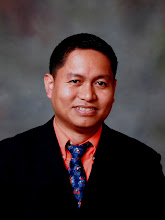Relating to Non-Human Universe
Summa from: Charles Kraft, Anthropology for Christian Witness.
Christian witness in relation to the non-human universe focuses on technology’s significance to human nature. Hence, anthropology takes into consideration the utilization of tools and techniques, as well as social customs (165). Charles Kraft argues that no human society that is not touched by non-human technology (166); at least to some degree, all of human societies have forms of technology in it whether in crude or advance type. With all the best and worst of technology can bring, humanity ought to control technology instead of being controlled by it (166). The same is true with Christian witness; technology is not the controlling factor in doing ministry. It must be used as a tool not as an end. Technology as a part of complex human construct, capacity, and custom is situated between the interaction of culture, biology, and environment (178). Technology is a product, to some extent, of the tension between the three components related to human beings. But the more technology advances, the more that the human culture becomes complex (176). This consequential effect is not bad in itself; however, there should be an “appropriate” consideration that will be given to it without overshadowing the people in any cross-cultural witness (179). Anthropological concerns may deal with self-sufficiency upon technology by which human feels it unnecessary to trust God. While it is humans that produced technology due to their limitations—as well as capacities—there is a present temptation always to trust in technology and usurp the place of God. Nevertheless, technology can be a means towards and efficient and effective witness, rather than an end.
Material culture can be a potential hindrance to effective witness (180). Missionary strategies ought to consider the economic factors in every culture (191). Principles of kinship, social roles, and concepts of self and communality are organizing elements to be considered in any anthropological relations (183-85). By these considerations, church strategies, form and structure of church building, location of the building, pastoral staff and support, can make adjustments and interactions for the furtherance of the ministry (191-3). Hence, Kraft emphasizes that, “church leadership patterns should be appropriate to the economic and social patterns of the receiving society, as they were in the Bible” (194). There is also a concern among foreign missionaries in relation to integrity of funds. Matter of “appropriateness” is in demand. Cultures practicing any form of bribery are called to question (195).
Since technology is, to some extent, related to religious belief, the problem of dichotomy—prevalent among Westerners—are affecting cross-cultural ministries (196-7). To “wholistic” cultures, separation of natural and supernatural is abnormal. The scientific orientation of the missioner is challenged by the worldview of the local society, especially in situation where religion is the core of the culture (198). Of course, technology posits a tendency to naturalize religious beliefs and practices. Such secularization of Christianity is a virtual anti or non-supernaturalistic religious belief. This is where powerless religions contribute to the “dual allegiance” of the converts. The recipients who encountered “powers”—and yet left without explanation to their experience—remains upholding that reality as well as embracing the powerless, anti-supernatural form of Christianity. Hence, technology as a non-human universe ought not to dehumanize religious beliefs.
Although Kraft is aware about the difference between a religion and a worldview, the tension between them remains an anthropological challenge (199). The difference, however, is amplified on matters of allegiance. Worldview as “basic perspectives on all of life” is distinct from religion as “allegiance” to divine structures. When commitment to God becomes central, worldview becomes more than just religiosity. A person may worship with various religious structures but with different allegiance towards the one God (200). The structure of worship is not the same as the object of worship.
The “power questions” are main concerns that gave impetus to the charismatic and Pentecostal movements (201).


0 Comments:
Post a Comment
<< Home